Today’s minor moves across the NFL:
Atlanta Falcons
- Cut: OL Rashaad Coward
New Orleans Saints
- Signed: OL Khalique Washington
- Cut: LB Sharif Finch (from IR)
Today’s minor moves across the NFL:
Atlanta Falcons
New Orleans Saints
Wide receiver Tavon Austin is signing a deal that will send him to camp in Buffalo where he’ll attempt to make the Bills’ roster this season, according to a tweet from Mike Garafolo of NFL Network. Austin has had trouble finding success since his time with the Rams and will attempt to jumpstart his career by filling the No. 2 or 3 wide receiver role on his sixth NFL team. 
The former top-ten pick out of West Virginia has had one of the more puzzling careers in the NFL. Widely known for having one of the best high school highlight reels of all time, Austin tore up the field during his four years at West Virginia. His senior season displayed his true potential as a triple-threat: receiving, rushing, and returning. In 2012, the Mountaineers receiver caught 114 balls for 1,289 yards and 12 touchdowns, rushed 72 times for 643 yards and 3 touchdowns, and averaged 11.0 yards per punt return and 25.4 yards per kickoff return, housing a return of each variety for a touchdown along the way.
Austin had trouble establishing himself as a receiver in the league, but demonstrated his elite elusiveness as a return man, being named a Pro Bowl alternate as a returner in his sophomore season. In the third year of his rookie contract with the Rams, Austin started to find the rhythm from his college days, becoming the first player since Gale Sayers in 1965 to score at least five receiving touchdowns, four rushing touchdowns, and a punt return touchdown in a single season.
The Rams gave Austin a four-year, $42MM extension before his fourth season. That season saw Austin record a career-high in receiving yards, but also saw his rushing and returning statistics diminish a bit. A frustrating first year under head coach Sean McVay the next year saw Austin’s usage plummet. Despite appearing in every game, and starting in nine of them, Austin saw a then-career-low 22 targets, catching 13 passes for 47 yards. His usage disappeared in the run and return game, as well.
In 2018, Austin was traded to the Cowboys in their attempts to replace former slot receiver Cole Beasley. In two seasons in Dallas, Austin caught 21 balls for 317 yards and 3 touchdowns. He signed in 2020 to join the 49ers, but was placed on injured reserve just prior to the season and released in October of that year. The Packers picked him up in December, but he gave very little in the way of on-field contributions. Last season saw Austin’s best season since his time with the Rams, as he played 13 games for the Jaguars, catching 24 passes for 213 yards and a touchdown.
In Buffalo, Austin will attempt to replace Beasley for a second time. The Bills are down their second- and third-best receivers (in terms of receiving yards) from last year, with Beasley and Emmanuel Sanders both hitting the free agent market. Besides tight end Dawson Knox, this leaves the receiver cupboard in Buffalo fairly bare with Stefon Diggs, Gabriel Davis, and Isaiah McKenzie being the only returning receivers with at least 10 targets from last year. The team also signed Jamison Crowder from the Jets in free agency and drafted Boise State receiver Khalil Shakir in the fifth round of the Draft.
It will be interesting to see how the Bills plan on utilizing Austin if he makes the 53-man roster, as McKenzie and receiver Marquez Stevenson currently serve as the team’s return men, with McKenzie playing a very similar role to what Austin did early in his career. Regardless, it looks like Austin will be getting another chance, this time in an offense that saw success last year for two veteran receivers over 32-years-old with a lot of the same on-field tendencies as Austin.
While the Patriots have the runaway lead on offensive staff uncertainty this offseason, the Lions feature some as they go through OTAs.
Detroit moved to a new offensive coordinator, Ben Johnson, this year. It remains unknown if he will take over the team’s play-calling. Dan Campbell, who called Lions offensive plays down the stretch last season, said it is unlikely he will determine the team’s play-caller until the regular season nears, per the Detroit News’ Justin Rogers.
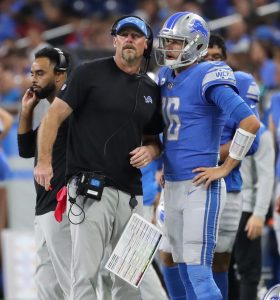 In his first months as the Lions’ full-time OC, Johnson has been calling plays during OTAs. That distinction obviously means considerably less than calling them during training camp or in the preseason. But that is how the Lions are proceeding as of early June. It is not a lock that is the direction they will go come September.
In his first months as the Lions’ full-time OC, Johnson has been calling plays during OTAs. That distinction obviously means considerably less than calling them during training camp or in the preseason. But that is how the Lions are proceeding as of early June. It is not a lock that is the direction they will go come September.
“Look, I’m really not even worried about it right now,” Campbell said, via Rogers. “I just want to take it as it comes and see how [Johnson] goes with it and see how he handles running the offense, doing what I need to have done on my end and kind of my viewpoint and see how the quarterbacks are and just everything, and then go from there.
“I’m a gut guy, so I’m going to trust my gut to make that decision when the time’s right.”
Campbell relieved 2021 OC Anthony Lynn of play-calling duties midway through last season, taking on that responsibility himself for the final nine games. That was a noticeable undertaking for the first-year Lions coach, who had not been a coordinator in between his time as Dolphins interim HC (2015) and his Lions hire. During Campbell’s play-calling stint, the Lions scored at least 29 points four times; they did so only once in the eight games prior.
Johnson, 35, is a first-time coordinator who has never called plays at any level. A Matt Patricia-era holdover who began last season as Detroit’s tight ends coach, Johnson worked as the team’s passing-game coordinator to close last season.
More will be expected of the Lions’ offense this season. The team added D.J. Chark in free agency and traded up 20 spots for Jameson Williams, who should be ready to return from ACL surgery at some point during his rookie season. Those two will join emerging playmakers D’Andre Swift and Amon-Ra St. Brown in what will be Jared Goff‘s second go-round leading the offense. After Sean McVay worked as Goff’s play-caller throughout their four-year run together, the seventh-year quarterback could have three play-callers in two years to start his Lions tenure.
Jonathan Bullard will have a chance to play for a fifth team in five years. The veteran defensive lineman agreed to a deal with the Vikings on Thursday, Tom Pelissero of NFL.com tweets.
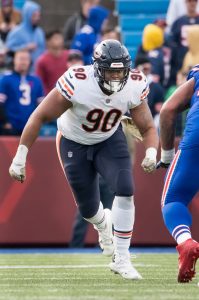 Formerly a Bears third-round pick, Bullard, 28, will return to the NFC North after a fairly well-rounded tour of the conference over the past three seasons. The Florida alum spent 2019 with Cardinals, 2020 with the Seahawks and 2021 as a Falcon. He has provided a rotational presence for each team.
Formerly a Bears third-round pick, Bullard, 28, will return to the NFC North after a fairly well-rounded tour of the conference over the past three seasons. The Florida alum spent 2019 with Cardinals, 2020 with the Seahawks and 2021 as a Falcon. He has provided a rotational presence for each team.
The six-year veteran will see multiple familiar faces on Minnesota’s staff. In Minnesota, Bullard will reunite with Ed Donatell, who was a Chicago staffer during Bullard’s three-year Bears run. Perhaps more significantly, new Vikings defensive line coach Chris Rumph was the Gators’ D-line coach during Bullard’s final Gainesville season.
As a pro, Bullard has managed to make 15 starts, having lined up as a first-stringer for three of his four NFL teams. Last season, Bullard made four starts with the Falcons. His high-water mark came with the Cards, who used him as a six-game starter. Bullard only has 3.5 career sacks and 13 tackles for loss, but the veteran interior D-lineman has hung around, playing at least 200 defensive snaps in five of his six seasons.
The Vikings added Harrison Phillips early in free agency but have not re-signed Sheldon Richardson. The team, which is moving to a 3-4 scheme for the first time in decades, drafted Esezi Otomewo in the fifth round.
To make room on their offseason roster, the Vikings waived defensive lineman Kenny Willekes with an injury designation. A 2020 seventh-round pick, Willekes played in six games last season. Despite the limited game log, the Michigan State product recorded 2.5 sacks and seven QB hits. Willekes will revert to the Vikings’ injured reserve if he clears waivers.
In the middle of their second week of OTAs, the 49ers managed to sign all their draft picks in a day. Each of San Francisco’s nine draftees agreed to terms on their four-year rookie contracts Thursday.
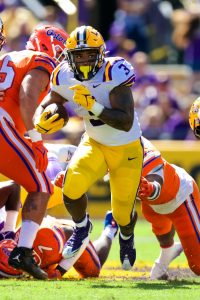 Because no first-rounders were part of this class, because of the 49ers’ Trey Lance trade-up, none of this group has a fifth-year option in his contract. While second- and third-rounders’ deals occasionally cause issues, this year being a moderately interesting one for Round 2 choices due to guaranteed years, each of the three 49ers Day 2 choices is locked in.
Because no first-rounders were part of this class, because of the 49ers’ Trey Lance trade-up, none of this group has a fifth-year option in his contract. While second- and third-rounders’ deals occasionally cause issues, this year being a moderately interesting one for Round 2 choices due to guaranteed years, each of the three 49ers Day 2 choices is locked in.
The 49ers began their draft by taking USC edge rusher Drake Jackson at No. 61 overall. Jackson, who recorded 12.5 sacks and 25 tackles for loss in three Trojans seasons, will be expected to play at least a rotational role for the 49ers this year. Jackson received $3.14MM of his $5.8MM slot deal guaranteed, Adam Schefter of ESPN.com tweets.
San Francisco’s Dee Ford bet largely did not pay off. Ford is expected to be released soon. The team brought back Kerry Hyder, after his one-and-done Seattle tenure, and signed ex-Colts second-rounder Kemoko Turay. Ex-Ram Samson Ebukam also remains on the 49ers’ roster, after signing last year. But Jackson will certainly be expected to be part of the 49ers’ Nick Bosa-fronted edge mix as a rookie.
San Francisco added third-round skill-position players Tyrion Davis-Price (No. 93) and Danny Gray (No. 105) as well. Davis-Price, a 211-pound LSU-produced running back, joins 2021 third-rounder Trey Sermon, starter Elijah Mitchell and veteran Jeff Wilson in San Francisco’s crowded-looking backfield. Davis-Price left LSU after his junior season — a 1,003-yard slate. A 5-foot-11 wideout, Gray played a prominent role in SMU’s pass-happy offense. A former Texas 3A 100-meter champion while in high school, Gray caught 49 passes for 803 yards and nine touchdowns as an SMU senior.
Here are the draft picks the 49ers are set to take into minicamp and training camp:
Round 2: No. 61 Drake Jackson, DE (USC) (signed)
Round 3: No. 93 Tyrion Davis-Price, RB (LSU) (signed)
Round 3: No. 105 Danny Gray, WR (SMU) (signed)
Round 4: No. 134 Spencer Burford, OL (Texas-San Antonio) (signed)
Round 5: No. 172 Samuel Womack, CB (Toledo) (signed)
Round 6: No. 187 (from Broncos) Nick Zakelj, OT (Fordham) (signed)
Round 6: No. 220 Kalia Davis, DT (Central Florida) (signed)
Round 6: No. 221 Tariq Castro-Fields, CB (Penn State) (signed)
Round 7: No. 262 Brock Purdy, QB (Iowa State) (signed)
The second of the Ravens’ two 2022 first-round picks signed his rookie contract Thursday. Tyler Linderbaum is now under contract through 2025, with his fifth-year option giving Baltimore a chance to keep him on this deal through 2026.
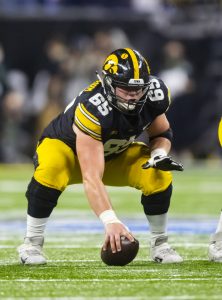 Baltimore obtained a second first-round selection by trading Marquise Brown to Arizona during the draft’s first night and traded down from No. 23 to No. 25 overall, allowing Buffalo to climb up for cornerback Kaiir Elam. Soon after, the Ravens drafted Linderbaum, the first center off the 2022 board.
Baltimore obtained a second first-round selection by trading Marquise Brown to Arizona during the draft’s first night and traded down from No. 23 to No. 25 overall, allowing Buffalo to climb up for cornerback Kaiir Elam. Soon after, the Ravens drafted Linderbaum, the first center off the 2022 board.
Linderbaum’s agreement leaves fellow Ravens first-rounder Kyle Hamilton, Steelers quarterback Kenny Pickett and Patriots guard Cole Strange as the only unsigned first-round picks.
The Iowa product will be expected to take over Ravens pivot responsibilities immediately. The team let 2021 snapper Bradley Bozeman sign with the Panthers. Baltimore will replace Bozeman with last year’s first-team All-American center. While Linderbaum received countless accolades last season, he was also a Rimington Trophy finalist in 2020. The Hawkeyes used Linderbaum as their starting center in 2019 as well, deploying an offensive line that featured two eventual first-round picks — Linderbaum and Tristan Wirfs.
Baltimore had not drafted an interior offensive lineman in the first round since Ben Grubbs 15 years ago. Linderbaum is the first center the Ravens have drafted in Round 1, providing a runway to a long career. Linderbaum joins Ronnie Stanley as Ravens first-round O-linemen, with veterans Kevin Zeitler and Morgan Moses set to accompany them up front.
Orlando Brown Jr.‘s career has gone through significant changes over the past year and change, resulting in the former third-round pick’s value skyrocketing. The veteran tackle took a step toward maximizing that value Thursday.
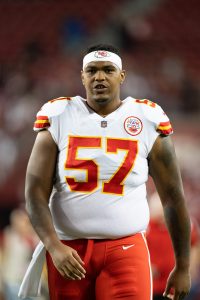 The Chiefs left tackle hired an agent, Mike Garafolo of NFL.com tweets. Brown will go with Michael Portner of the Delta Sports Group. Although several players have made the decision to go without agents in recent years, most still do. This represents a key step for Brown, who is engaged in a pivotal negotiation with the Chiefs. The parties have begun the talks, and Brown’s new agent will run point from here.
The Chiefs left tackle hired an agent, Mike Garafolo of NFL.com tweets. Brown will go with Michael Portner of the Delta Sports Group. Although several players have made the decision to go without agents in recent years, most still do. This represents a key step for Brown, who is engaged in a pivotal negotiation with the Chiefs. The parties have begun the talks, and Brown’s new agent will run point from here.
Brown going with Portner is an interesting decision, with Garafolo adding the 26-year-old O-lineman sought an agent without relationships with NFL GMs (Twitter link). Brown is DSG’s first NFL client. That will certainly add intrigue to his Chiefs extension discussions.
Kansas City used its franchise tag on Brown in March, cuffing the fifth-year blocker with a $16.7MM salary. The team has until July 15 to sign Brown to a long-term extension. Absent a deal by then, Brown will play the 2022 season on his franchise tender — one he has not yet signed.
Formerly the Ravens’ right tackle starter, Brown replaced an injured Ronnie Stanley on the left side to close out the 2020 season. From there, Brown no longer wanted to play right tackle. This led to the Chiefs sending the Ravens a quality trade package for the contract-year lineman. Kansas City tabled extension talks with Brown until 2022, and he is now aiming to be the NFL’s highest-paid offensive lineman.
Three left tackles — Trent Williams, David Bakhtiari and Laremy Tunsil — earn $20MM per year. They are the NFL’s only $20MM-AAV O-linemen. Brown becoming the fourth seems likely. The Chiefs giving up a first-round pick in last year’s trade points to an extension coming to pass, and the team only has one other blocker (Joe Thuney) signed to a notable veteran contract. That clears a space for Brown, but his aspirations may complicate these negotiations.
Although early June no longer serves as a stretch in which a wave of veterans are released for cap-saving purposes, June 2 still serves as an important calendar date for certain teams annually. Nine teams qualify as beneficiaries this year.
Eleven players were designated as post-June 1 cuts this year, via CBS Sports’ Joel Corry. Due to a longstanding CBA provision, teams that designate players as post-June 1 releases see the dead-money burden lessened for that year. Teams can designate up to two players as post-June 1 releases each year.
Here are 2022’s post-June 1 cuts, along with the belated cap savings the teams picked up Thursday:
As detailed in PFR’s glossary, post-June 1 cuts spread dead-money hits over two years. These teams will be taking on dead money this year and next. A few of the 2023 hits are substantial, but the league’s cap-space hierarchy changed significantly Thursday as well.
Because of multiple restructures, Raiders will carry $9.9MM in Littleton dead money next year. The Cowboys will take on $8.7MM in 2023 for cutting Collins, while the Titans will be hit with $8.4MM for their Jones release. Cleveland, which just gave David Njoku a $14.2MM-per-year deal, will carry a $7.5MM dead-money cost next year due to shedding Hooper’s eight-figure-AAV deal early. The Eagles will be tagged with $11.5MM for their Cox cut, with Corry noting that is the net difference because of a $3.2MM salary cap credit regarding Cox’s 2022 bonus proration. Philadelphia re-signed the perennial Pro Bowler on a one-year, $14MM deal.
Hooper’s release pushes Cleveland’s cap space to beyond $40MM; the Browns’ overall cap-space edge is now a whopping $15MM. That should help the team address multiple needs ahead of training camp. Other teams have more options now, too. As of Thursday, the Raiders hold the NFL’s third-most cap space ($22.5MM, per OverTheCap). The $10MM the Cowboys saved moves them up to fourth in cap space ($22.49MM), while the Bears ($22.2MM), Commanders ($18.4MM) and Seahawks ($17MM) now sit fifth, sixth and seventh.
A handful of this year’s post-June 1 cut crop joined Cox in taking advantage of the modern setup, which allows these cap casualties to become free agents immediately — rather than waiting until June to hit the market. In place since the 2006 CBA, this adjustment let veterans loose early while keeping their cap figures on teams’ payrolls through May. Collins quickly joined the Bengals, while Littleton landed with the Panthers, Hooper signed with the Titans, and Phillips returned to the Bills. The remainder of this group remains unsigned. The savings this lot of teams inherited Thursday may help some of these players’ causes in free agency.
After a lengthy stretch of contemplation about retirement or playing a 14th season, Alex Mack looks to have decided on the former. The decorated center is set to retire, Michael Silver of Bally Sports reports (on Twitter).
 This will cap Mack’s 49ers tenure at one year and give the team another interior offensive lineman to replace. Mack started all 20 49ers games last season, rejoining Kyle Shanahan after the two previously linked up in Atlanta and Cleveland. Joining Ryan Fitzpatrick as a Thursday retiree, Mack finishes his career as a seven-time Pro Bowler.
This will cap Mack’s 49ers tenure at one year and give the team another interior offensive lineman to replace. Mack started all 20 49ers games last season, rejoining Kyle Shanahan after the two previously linked up in Atlanta and Cleveland. Joining Ryan Fitzpatrick as a Thursday retiree, Mack finishes his career as a seven-time Pro Bowler.
Mack’s seven Pro Bowls are tied for sixth all time among pure centers, and although the Pro Bowl alternate era factors into this count, that number ranks behind only Maurkice Pouncey and Hall of Famers Jim Otto, Jim Ringo, Mike Webster and Kevin Mawae. Mack joined Pouncey on the 2010s’ All-Decade team at center.
The 49ers have had extensive time to prepare for this outcome and gained around $4MM in cap room Thursday by reducing Mack’s contract and moving $500K up to a June 2022 payment. Mack, 36, signed a three-year deal worth $14.85MM in 2021. That telling transaction will allow the 49ers more flexibility to potentially sign a Mack replacement, though Jimmy Garoppolo‘s $26.9MM cap hold has clogged San Francisco’s payroll for a while. It does not look like that lofty figure will come off San Francisco’s books in the near future, and the team entered Thursday ranking 31st in cap space. Mack’s adjustment still stands to help.
The Browns drafted Mack in the 2009 first round, and he delivered three Pro Bowl seasons in six Cleveland years. The Cal alum enjoyed an interesting offseason in 2014, when the Browns transition-tagged him and Jaguars submitted an offer sheet. The Browns matched the five-year, $42MM offer, but that deal gave Mack the right to opt out after two seasons. He did, doing so in 2016 en route to rejoining Shanahan — his Browns OC in 2014 — with in Atlanta. The Falcons handed Mack a five-year, $45MM deal, giving Matt Ryan a quality center ahead of a key season.
Atlanta’s Shanahan-conducted 2016 offense scored 540 points, which still ranks eighth in NFL history. Mack earned the second of his three second-team All-Pro nods, helping Ryan claim MVP honors. This season ended infamously in Super Bowl LI, but Mack made the Pro Bowl in his first three Falcons campaigns. He only missed two games during his Falcons years, playing out that five-year accord ahead of his return to the Bay Area. Mack earned his seventh Pro Bowl invite, albeit as an alternate, for his 49ers work.
Mack’s arrival helped the NFC West squad, which saw a severe Weston Richburg injury alter its center plans previously. This marks another belated retirement announcement on the 49ers’ O-line, which lost Joe Staley to an April 2020 retirement. The team responded by trading for Trent Williams. If the 49ers have a similar mindset two years later, some experienced snappers are available.
NFLPA president J.C. Tretter remains on the market, after the Browns made their five-year center a cap casualty in March. Former Broncos and Panthers starter Matt Paradis is also a free agent, with ex-Bengals starter Trey Hopkins and former Texans pivot Nick Martin available as well. The 49ers, who lost five-year left guard Laken Tomlinson in free agency, have some young internal options. None resides in the experience ballpark compared to the aforementioned UFA contingent.
A left tackle in college, Connor Williams lined up at guard throughout his four-year Cowboys tenure. The Dolphins have something new in mind for the free agent offensive line acquisition.
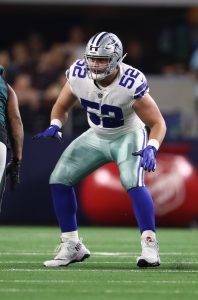 Williams said Thursday it is “really likely” he plays center in Miami, via Barry Jackson of the Miami Herald. This has loomed as a possibility for months, and Williams has been working at the position since April. While it is interesting the team has this path mapped out before any padded practices commence, Williams sliding to center would fill a need and open the door to multiple lineup combinations on this O-line.
Williams said Thursday it is “really likely” he plays center in Miami, via Barry Jackson of the Miami Herald. This has loomed as a possibility for months, and Williams has been working at the position since April. While it is interesting the team has this path mapped out before any padded practices commence, Williams sliding to center would fill a need and open the door to multiple lineup combinations on this O-line.
The Dolphins signed Williams and Terron Armstead to lucrative deals, particularly in Armstead’s case, locking them into starting roles. Robert Hunt fared decently at right guard last season, even beyond his memorable end zone dash that did not count, grading as the top Dolphins O-lineman in Pro Football Focus’ view. PFF rated last year’s Miami front as the NFL’s worst. Should the Dolphins stay the Williams-at-center course, he will replace Michael Deiter. Still, it appears three starters from last season are in line to return under Mike McDaniel.
Williams sliding to center will lead to a left guard competition between Liam Eichenberg and Solomon Kindley, Jackson adds. Eichenberg served as Miami’s primary left tackle last season, with the 2021 second-rounder moving 2020 first-rounder Austin Jackson off that spot. Jackson is ticketed to give right tackle a try, according to the Herald. With the Tyreek Hill trade pushing the start of their draft participation into Round 3, the Dolphins did not draft a lineman this year.
The USC product was Miami’s primary left tackle as a rookie and made starts at left tackle and left guard last season. PFF graded Jackson as a below-average guard and viewed Eichenberg as a bottom-tier tackle. This right tackle opportunity looks to represent a high-stakes situation for the once-coveted prospect, who has not lived up to his draft slot yet as a pro. Longtime right tackle option Jesse Davis signed with the Vikings this offseason. A 2020 fourth-rounder, Kindley made 13 guard starts as a rookie but worked as a first-stringer just twice last season.